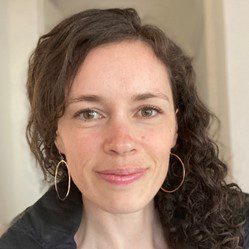IGCP 648 Virtual Seminar Series
This seminar series was initiated by Dr Sheree Armistead as a solution to the reduced connectivity of our IGCP648 members during the COVID-19 global pandemic. A great many thanks to Dr Sheree Armistead for her extraordinary efforts in organising the first series of seminars and making it a great success!
Thank you also to all of the wonderful partipants and speakers that continue to make this series a success!
The next virtual seminar series will be held on: TBA
Please feel free to email us (IGCP648.vss@curtin.edu.au) with any comments, recommendations, or future speaker requests.
To participate in this and future seminar series please email us. Once registered, the meeting details will be emailed to you.
You can also follow us on twitter.
Publically available seminars are also posted to our YouTube playlist.
Hosted on Zoom, the IGCP 648 Virtual Seminar Series consists of a weekly one hour seminar. The one hour time slot will involve either (i) one ~40 min talk or (ii) two ~20 min talks (depending on speaker preferences), with plenty of time for questions and discussion. The actual time of each presentation will vary each week to suit different time zones. Where possible (and permitted), seminars will also be recorded and hosted here so that everyone can be involved.
Previous seminars
Series 5 (Q4 2022)
Series 5, Seminar 7 - Veronique Le Roux  Water in the Earth's mantle: story from the ocean's abyss
Water in the Earth's mantle: story from the ocean's abyss
Speaker bio
Veronique Le Roux did her PhD between Universite of Montpellier in France and Macquarie University in Sydney, and worked primarily on the chemical and physical consequences of interactions between magma and mantle rocks. She then moved on to a postdoc fellow position at Rice University (US) where she worked with Cin-Ty Lee on tracking mantle heterogeneties using transition metal tracers through an experimental and analytical approach. Dr Le Roux then obtained a postdoc scholarship at the Woods Hole Oceanographic Institution and was offered to transition to Faculty in 2013. Since then, she has worked with a group of students and postdocs on topics such as water and halogen budgets of mantle and crustal reservoirs, mechanisms of slab material transfer in subduction zones, mantle heterogeneties and magma-rock interactions, processes and consequences of mantle rock alteration. Dr Le Roux uses analytical, field, experimental, and imaging techniques.
Abstract
The presentation will give a brief overview of the importance of water in the solid Earth, water budgets in Earth’s reservoirs, and remind the audience about proxies to constrain the water content of the Earth’s upper mantle. Then, we will dive at the bottom of the Atlantic Ocean to unravel water variations in unique mantle rocks exposed near an oceanic ridge. There might even be few pictures of Australian wildlife for entertainment.
Series 5, Seminar 6 - Anthony Lagain  90 million craters reveal the ejection site of martian meteorites
90 million craters reveal the ejection site of martian meteorites
Speaker bio
Anthony Lagain is a Research Fellow at Curtin University. He completed his Planetary Science MSc and PhD at Paris-Saclay University before moving to Australia. His expertise covers the use of machine learning applied to high-resolution planetary images and the study of the impact cratering record to trace back the impact flux evolution in the Solar System, the origin of Martian meteorites and the evolution of surface processes on planetary bodies.
Abstract
Martian meteorites are the only samples from the Red Planet available on Earth for in-depth analysis. Ejected less than ~20Ma ago by a dozen of asteroid impacts, the precise regions where they are coming from are still unknown. This gap in knowledge precludes us to replace these samples in their context of formation, i.e. linking microanalysis results with macroscale geological processes responsible for the formation and evolution of the planet. If we understood their provenance, those Martian meteorites become their own sample return missions. During this talk, I will show how the use of a machine learning crater detection algorithm coupled with the characteristics of the regolith breccia NWA7034 and paired stones allowed us to constrain its source and what does it imply for the geological history of Mars and future exploration.
Series 5, Seminar 5 - Xiyuan Bao  Are hotspots hotter than ridges?
Are hotspots hotter than ridges?
Speaker bio
Xiyuan Bao got his bachelor degree of science in geophysics at the University of Science and Technology of China, he is now a PhD Candidate in geophysics at University of California, Los Angeles. He is interested in studying dynamics of the deep earth interior and their surface expressions, with experimental, computational, and surrogate approaches. His current research focuses on the relationship between plumes and LLSVPs, using laboratory experiments with state-of-the-art 3D scanning Stereoscopic Particle Image Velocimetry (SPIV) and Lagrangian analysis.
Abstract
The temperature and composition of the mantle domains sourcing hotspots and mid-ocean ridges are fundamental to understanding their origin. Primordial 3He/4He ratios in ocean island basalts (OIBs) are as high as 50 times the present atmospheric ratio (Ra) compared to 8 Ra for mid-ocean ridge basalts (MORBs). Hotspots with the highest 3He/4He ratios are also the strongest (higher buoyancy flux). Petrological thermometers of olivine in OIBs suggest a range of 100-300 °C excess potential temperature for all hotspots, not only the strongest. However, geographical coverage is limited and estimates are often inconsistent for individual hotspots. I will show our new inferences of the temperature of ridges and hotspots using a thermodynamically self-consistent velocity to temperature conversion and seismic tomography. Assuming the upper mantle and plume source are compositionally homogeneous and consist of depleted MORB mantle (DMM), we find that at least 50% oceanic hotspots (“warm” or “cold”) are not resolvably hotter than ridges, instead only “warm” or “cold” and barely above the dynamical limit for active rise in the convecting mantle. “Hot” hotspots on the other hand do indeed have higher buoyancy fluxes and high 3He/4He. These conclusions are robust even in the presence of recycled basaltic crust in the plume source. Warm and cold hotspots do not fit classical plume theory and require different explanations.
Series 5, Seminar 4 - Qian Yuan  What Controls the Morphology of Earth’s Basal Mantle Structure?
What Controls the Morphology of Earth’s Basal Mantle Structure?
Speaker bio
Qian Yuan is now a Texaco Postdoctoral fellow at California Institute of Technology. He received his Ph.D. degree in geodynamics with an emphasis on the dynamics of lower mantle structures from Arizona State University and the B.S. degree in geology from China University of Geosciences, Wuhan. His research focuses on dynamic processes in the interior of Earth, and how these processes influence surface geological activities such as plate tectonics and volcanic eruptions. He primarily uses geodynamic simulations, as well as a range of geophysical observations, petrological and geochemical analyses in pursuing related research. His long-term goal is to integrate the geophysical, geochemical and planetary processes into a self-consistent model that could better understand the evolution and habitability of Earth and beyond.
Abstract
In Earth’s lowest mantle, two continent-sized structures with anomalously low seismic velocities have been revealed decades ago. One such structure is under the African continent and the other is beneath the Pacific Ocean. Together they are commonly referred to as large low-shear-wave-velocity provinces (LLSVPs). LLSVPs are generally regarded as intrinsically dense thermochemical piles that influence mantle and core processes. By examining their morphology and dynamic states, we can advance our understanding of how Earth’s interior has evolved and coupled with the surface system on a range of spatial and/or temporal scales. Through a systematic analysis of previous global seismic data of Earth’s mantle, we show that the African anomaly is ~1,000 km taller than its Pacific counterpart. Then by performing mantle convection simulations, we find that the maximum height a thermochemical pile can reach is more controlled by its density and the surrounding mantle viscosity, and less so by its own viscosity and volume. Comparing these findings suggests that the African anomaly has a relatively lower density and thus may be less stable than the Pacific anomaly. The unstable African structure further renders it susceptible to background mantle flow changes, in which case it may have been pushed to rise significantly by the subducted Tethys slabs since ~150 million years ago.
Series 5, Seminar 3 - Andrea Giuliani  Perturbation of the deep-Earth carbon cycle in response to the Cambrian Explosion
Perturbation of the deep-Earth carbon cycle in response to the Cambrian Explosion
Speaker bio
Andrea Giuliani is Senior Scientist at ETH Zurich where he holds a Swiss National Science Foundation Ambizione Fellowship to undertake fundamental research pertaining the composition and evolution of the deep Earth and the genesis of diamond deposits.
Abstract
Earth’s carbon cycle is strongly influenced by subduction of sedimentary material into the mantle. The composition of the sedimentary subduction flux has changed considerably over Earth’s history, but the impact of these changes on the mantle carbon cycle is unclear. Here, we show that the carbon isotopes of kimberlite magmas record a fundamental change in their deep-mantle source compositions during the Phanerozoic Eon. The 13C/12C of kimberlites before ~250 Ma preserves typical mantle values, whereas younger kimberlites exhibit lower and more variable ratios—a switch coincident with a recognized surge in kimberlite magmatism. We attribute these changes to increased deep subduction of organic carbon with low 13C/12C following the Cambrian Explosion when organic carbon deposition in marine sediments increased significantly. These observations demonstrate that biogeochemical processes at Earth’s surface have a profound influence on the deep mantle, revealing an integral link between the deep and shallow carbon cycles.
Series 5, Seminar 2 - Alexandra Yang Yang  Hemispheric-scale water heterogeneity of the asthenospheric mantle
Hemispheric-scale water heterogeneity of the asthenospheric mantle
Speaker bio
Alexandra Yang Yang is an Associate Professor in the State Key Laboratory of Isotope Geochemistry, Chinese Academy of Sciences (CAS). She received her B.S. degree from Lanzhou University in 2007, and Ph.D. degree from CAS in 2013. Prior to her current position, she was a post-doctoral researcher at the Cardiff University in 2014-2015. She was a visiting scholar in Harvard University in 2019. Her research interests focus on the mantle-derived volcanics globally to study the chemical compositions and evolution of the mantle, as well as the deep Earth volatile cycles triggered by plate tectonics and their influence on the habitability of the Earth.
Abstract
Subduction of ocean plates carry abundant water into the Earth’s interior, and it is still unclear as to how far water can be delivered. New global MORB compilation suggests that the mantle beneath the Pacific Ocean is dry but wet beneath the Arctic Ocean. To explore the cause of such an hemispheric-scale water heterogeneity of the asthenosphere, we conducted high-precision LA-ICP-MS analyses on 576 MORB glasses from the Arctic Gakkel ridge, and identified unique MORB samples with distinct arc signatures and a pervasive subduction influence in the whole region. This influence can also be identified in Atlantic and Indian MORB but is nearly absent in Pacific MORB. Such a hemispheric-scale upper mantle heterogeneity reflects subduction modification of the asthenospheric mantle which is incorporated into mantle flow, and whose geographical distribution is controlled dominantly by a “subduction shield” that has surrounded the Pacific Ocean for 180Myr. Simple modeling suggests that a slab flux equivalent to ~13% of the output at arcs is incorporated into the convecting upper mantle. Our finding also provides additional evidence for the gateway of Pacific mantle outflow to Atlantic and Indian as a consequence of shrinking Pacific Ocean. The Caribbean and easternmost Southeast Indian Ocean with Pacific-like trace element signatures are likely gateways for Pacific mantle outflow, whereas the Drake passage, with strong subduction signals, might not be such a gateway.
Series 5, Seminar 1 - Nicolas Flament  Setting the lower mantle free
Setting the lower mantle free
Speaker bio
Nicolas Flament is a Senior Lecturer at the University of Wollongong. He graduated in 2010 with a PhD in Earth Sciences from École Normale Supérieure de Lyon and The University of Sydney (cotutelle). He investigates the deformation of the solid Earth over tens of million years by merging geodynamic models with global geological observations in collaboration with Earth Scientists in academia and in industry.
Abstract
Plate tectonics shapes Earth’s surface, and is linked to motions within its deep interior. Cold oceanic lithosphere sinks into the mantle, and hot mantle plumes rise from the deep Earth, leading to volcanism. Volcanic eruptions over the past 320 million years have been linked to two large structures at the base of the mantle presently under Africa and the Pacific Ocean. This has led to the hypothesis that these basal mantle structures could have been stationary over geological time, in contrast to observations and models suggesting that tectonic plates, subduction zones and mantle plumes have been mobile. Here we reconstruct mantle flow from one billion years ago to the present day to show that the history of volcanism is statistically as consistent with mobile basal mantle structures as with fixed ones. In our reconstructions the structure beneath Africa progressively assembled from 400 million years ago, pushed by sinking oceanic lithosphere, to become a coherent structure as recently as 60 million years ago. In contrast to previous suggestions, our mantle flow models suggest that basal mantle structures are mobile, and aggregate and disperse over time, similarly to continents at Earth’s surface. Our models also predict the presence of continental material in the mantle beneath Africa, consistent with geochemical data.
